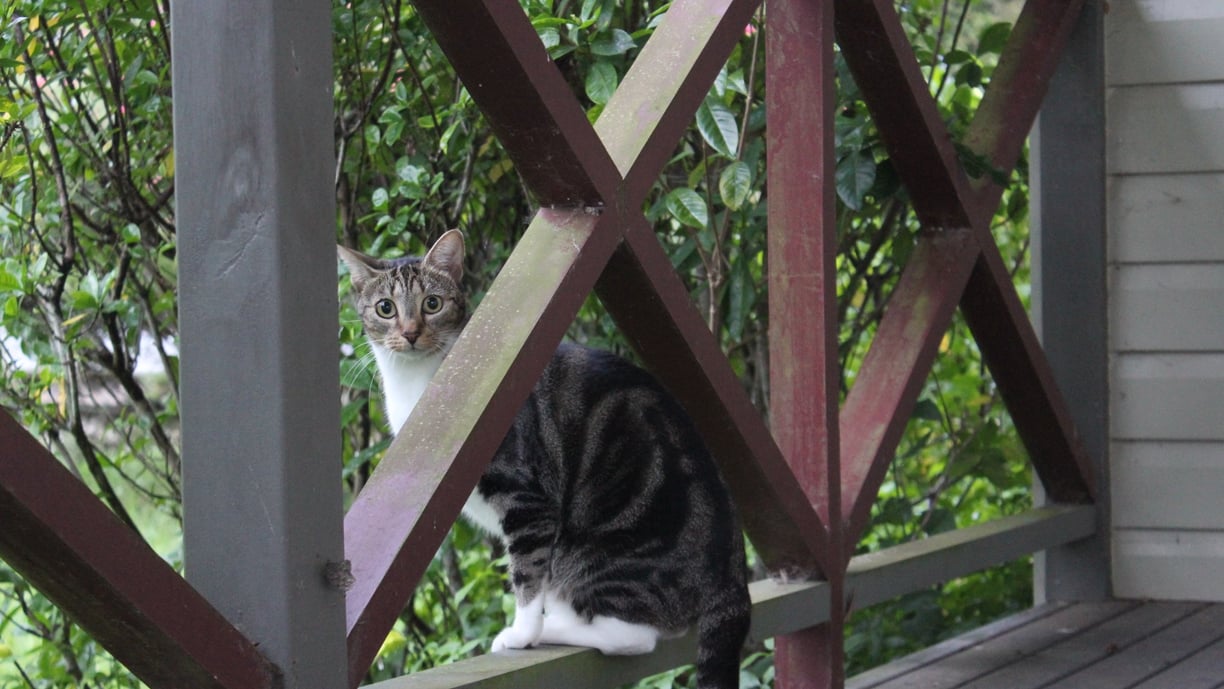The Nature of Consciousness
Exploring the non-local and unified nature of consciousness


The Nature of Consciousness
"You are not the body, nor is the body yours, nor are you the doer of actions or the reaper of their consequences. You are the one unchanging, formless, pure consciousness—the witness." — Ashtavakra Gita
Consciousness, the fundamental essence of our being, invites profound reflection and inquiry. It is the thread connecting us to the truth of oneness—the reality that all existence is inherently interconnected and indivisible. Yet in our everyday experience, this truth is often obscured by the illusion of separation, a distortion that frames the self as isolated and independent from the greater whole.
And if we aren't separate persons but rather consciousness or pure existence, there exists fascinating phenomena that reveal this truth. Evidence emerges from extraordinary experiences like remote viewing, telepathy, past-life memories, and savant abilities—each suggesting that our identity extends far beyond the physical boundaries we typically accept.
The creative experiences of artists like J.K. Rowling provide compelling glimpses into the expansive nature of consciousness, suggesting it exists beyond the confines of the individual mind. Rowling has described how her ideas seem to arise unbidden, almost as though they choose her. In the 1990s, while delayed on a train, the entire premise for Harry Potter emerged fully formed: a boy wizard, unaware of his true nature, receives a letter inviting him into a hidden world. She did not consciously craft this idea—it simply arrived, whole and alive. Many artists, writers, and innovators recount similar experiences, describing moments of inspiration as a process of receiving rather than deliberate effort.
This phenomenon extends beyond the creative realm. Consider a common scenario: while recounting a story to a friend, you pause, struggling to recall a name. Letting it go, you continue speaking, and suddenly, mid-sentence, the name surfaces—seemingly from nowhere. If asked how you remembered, your response might be, "I don't know—it just came to me." These ordinary moments reveal something extraordinary about consciousness: it operates in ways that often bypass deliberate thought, offering insights that arise effortlessly, as though drawn from a deeper well of awareness.
Such experiences challenge the materialist perspective that frames consciousness as merely a byproduct of brain activity. Instead, they suggest that the brain functions as a receiver, translating the vast field of consciousness into individual experience. This perspective dissolves the illusion of separation, revealing the mind as a conduit for a universal field of awareness. From this understanding, the perceived boundaries between self and other, mind and matter, begin to dissolve, unveiling the unity underlying all existence.
This understanding serves as the foundation for exploring phenomena that defy the limitations of materialist paradigms. Remote viewing, savant syndrome, telepathy, and past-life memories provide compelling evidence of consciousness as a non-local phenomenon, unbound by time, space, or individuality. These experiences offer tangible demonstrations of oneness in action, inviting us to reconsider the ego's narrative of separation.
Remote viewing provides compelling evidence that consciousness extends beyond the physical confines of the body. One of its most remarkable practitioners was Joseph McMoneagle, whose documented successes within the U.S. government's classified programs challenged conventional understanding of human perception.
McMoneagle's most striking demonstration occurred in 1979 when military intelligence tasked him with investigating a mysterious site in northern Russia. During a monitored session, McMoneagle described seeing a massive new submarine under construction, unlike anything in the existing Soviet fleet. He sketched detailed technical features: an unusual double hull design, distinctive propulsion system, and specific internal components. Most remarkably, he noted the submarine's exceptional size—approximately 650 feet long—far larger than any known submarine at the time.
The testing conditions for McMoneagle's remote viewing sessions were rigorous and controlled. Researchers at the Stanford Research Institute monitored his brainwave activity while he focused his attention on geographical coordinates provided by military intelligence. McMoneagle entered a meditative state, his consciousness seeming to travel across thousands of miles to observe the target location in real-time. He drew detailed sketches and provided verbal descriptions while maintaining no physical contact with the actual site or any information about it.
Months later, satellite imagery confirmed McMoneagle's descriptions in stunning detail. The Soviets were indeed constructing a revolutionary Typhoon-class submarine matching his specifications precisely, from its double hull to its dimensions. This vessel would remain unknown to Western intelligence for another year and wouldn't be launched until 1980. McMoneagle had essentially "seen" and accurately described a classified submarine while it was still under construction, thousands of miles away.
The implications of McMoneagle's success extend beyond military intelligence. If consciousness can perceive distant objects and events without any known sensory mechanism, this challenges our fundamental understanding of awareness itself. It suggests that consciousness operates outside the limitations of space and time, accessing information through means that transcend conventional physical laws.
Among the most fascinating demonstrations of extraordinary mental capabilities is the case of Nadia Camukova, who can recite all seven Harry Potter books from memory—word for word, in multiple languages. Discovered in 2022, Nadia's abilities extend far beyond mere memorization. She can instantly locate any passage from the series, recite chapters backward, and even translate portions between English, Russian, and Turkish in real-time.
What makes Nadia's case particularly intriguing is that she accomplished this feat without deliberately trying to memorize the books. She reports that after reading each book just once, the entire text remained perfectly preserved in her mind, as though she were reading from an internal copy. When tested, she could begin reciting from any arbitrary point in the series, maintaining perfect fidelity to the original text, including punctuation marks and page breaks.
Nadia describes experiencing the text visually—seeing entire pages floating before her mind's eye, complete with font styling and formatting. This suggests her memory operates more like a perfect photographic capture than conventional memorization. During demonstrations, she can "scroll" through these mental pages in any direction, accessing the content as easily as someone might browse a physical book. When researchers test her by asking for specific passages, she appears to navigate through this mental library instantly, locating precisely the requested content within seconds.
The facility with which Nadia accesses this information raises profound questions about the nature of memory and consciousness. Rather than retrieving information through conventional neural pathways, her experience suggests a direct accessing of content that exists in a perfect, unchanging form within her awareness. This phenomenon challenges traditional models of memory formation and retrieval, pointing toward consciousness as a field of information that transcends the usual constraints of learning and forgetting.
Recent research into telepathic communication has produced remarkable evidence, particularly through the groundbreaking Telepathy Tapes podcast hosted by Ky Dickens. The podcast documents a series of controlled experiments with non-speaking autistic individuals who demonstrate extraordinary abilities to perceive others' thoughts.
In one compelling episode, Dickens works with a 14-year-old non-speaking participant who accurately reproduces complex sequences of numbers and symbols that researchers are thinking of, far exceeding statistical probability. The sessions are conducted under strict protocols to prevent conventional communication: the participant faces away from the researchers, wears noise-canceling headphones, and has no visual access to the test materials. Despite these barriers to sensory input, the participant consistently demonstrates the ability to perceive and accurately reproduce specific mental content known only to the researchers.
The methodology employed in these experiments is deliberately rigorous. Researchers first establish baseline measurements of the participant's performance under various conditions. They then introduce increasingly complex information patterns while maintaining complete isolation between the sender and receiver. The results consistently show accuracy rates that far exceed chance, with some sessions achieving near 100% accuracy in transmitting specific sequences of numbers, letters, and symbols.
What makes these experiments particularly noteworthy is their reproducibility. Over multiple sessions spanning months, participants consistently demonstrate the ability to perceive and communicate specific information known only to the researchers. The podcast meticulously documents the testing conditions, verification processes, and results, providing transparent insight into the methodology. These findings suggest that telepathic communication, rather than being a rare or mystical phenomenon, might be a latent capability within human consciousness, particularly accessible to individuals whose conventional communication channels operate differently.
The work of Dr. Jim Tucker at the University of Virginia has documented over 2,500 cases of children claiming memories of past lives. These cases follow a consistent pattern: children between ages 2-6 speak of lives they claim to have lived before, providing specific, verifiable details about people and places they've never encountered.
The case of Ryan Hammons stands out in reincarnation research. As a young child, Ryan began speaking about a past life in Hollywood, claiming to have been an agent for famous stars. He described working with notable figures like Glenn Ford and Rita Hayworth, mentioned driving expensive cars, and recalled living in a mansion with a pool. What made his case particularly compelling was the specificity and consistency of his claims over time.
Through extensive investigation, researchers identified Marty Martyn, a former movie extra who became a Hollywood talent agent. The correspondence between Ryan's memories and Marty's documented life proved remarkable. Ryan claimed to have had multiple wives, and Marty was indeed married four times. Ryan described owning a green car, while records showed Marty drove a distinctive green vehicle around Hollywood. Ryan mentioned a house with a large swimming pool, matching Marty's last residence. Most significantly, Ryan accurately described specific interactions with Rita Hayworth and other celebrities, details that were later verified through historical records and interviews with Marty's surviving family members.
The investigation process itself followed strict scholarly protocols. Dr. Tucker's team verified each claim independently, cross-referencing Ryan's statements with documented historical information, official records, and interviews with surviving relatives. They found that Ryan accurately described aspects of Marty's life that had never been publicly documented, including details about his professional relationships, personal habits, and specific events that could only have been known by Marty himself.
Perhaps even more striking was Cameron Macaulay, the Scottish boy documented in Netflix's "Surviving Death" series. Cameron insisted he had lived on the island of Barra, providing specific details about a previous life including the name of his former mother and descriptions of a white house overlooking a bay. He described his previous family's black and white dog, the beach where he played, and the specific layout of the house, down to details like where specific furniture was placed and peculiarities of the property.
When his skeptical parents finally traveled to Barra—220 miles from their Glasgow home—they discovered many of these details matched reality. Family members on Barra recognized Cameron's descriptions, including details about residents who had lived there decades earlier. The white house he described existed precisely where he had indicated, though parts of his memory didn't align perfectly with current reality, suggesting his memories might have corresponded to an earlier time period when the area looked different.
The significance of these past-life memory cases extends beyond individual anecdotal evidence. The systematic documentation and verification process employed by researchers at major universities lends credibility to the phenomenon. These cases suggest that memory and identity might not be confined to a single physical lifetime, pointing toward consciousness as a continuous thread that transcends physical death.
These documented cases of expanded consciousness challenge our conventional understanding of human potential. They suggest that consciousness operates beyond the limitations we typically assume, accessing information through channels we're only beginning to understand. Each case provides a window into capabilities that, while extraordinary, appear to be latent within human consciousness itself.
The materialist paradigm that dominates Western science struggles to account for these phenomena. If consciousness were merely an emergent property of brain chemistry, how could awareness extend beyond the physical body to perceive distant events? How could individuals access detailed information from lives they've never lived? How could memory function with such perfect fidelity without apparent neural encoding?
These questions point toward a fundamental reconceptualization of consciousness itself. Rather than being produced by the brain, consciousness appears more like a field within which individual experiences arise. The brain might function less as a generator of consciousness and more as a receiver or transmitter—similar to how a radio doesn't create the waves it receives, but serves as a localized point of access to a broader field of information.
This perspective dissolves the illusion of separation, revealing individual consciousness as nodes within a vast, interconnected field of awareness. From this understanding, phenomena like telepathy, remote viewing, and past-life memories become less mystical and more like natural expressions of consciousness operating beyond its usual constraints. The boundaries between self and other, present and past, here and there, begin to blur, suggesting that the separation we experience might be more a function of our limited identification than an actual feature of reality.
The practical implications of this understanding are profound. If consciousness is indeed non-local and unified, then our individual well-being becomes inseparable from the whole. The healing of one potentially contributes to the healing of all. Our personal awakening might be understood not as an individual achievement but as consciousness recognizing itself more fully through this particular node of experience.
These phenomena collectively serve as tangible demonstrations of oneness in action, each pointing toward the recognition that consciousness might be far more vast, interconnected, and fundamental than our everyday experience suggests. They invite us into a direct investigation of our own nature, encouraging us to explore the possibility that what we truly are extends infinitely beyond the boundaries of our physical form and personal history. In this exploration, the extraordinary becomes a doorway to recognizing the extraordinary nature of ordinary awareness itself.






